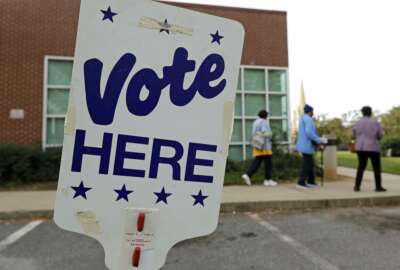
Can the fed vote tilt the election?
Can the large number of federal workers in low-voter turnout cities and districts make the difference in next Tuesday’s congressional and gubernatorial elections?
Can the large number of federal workers in low-voter turnout cities and districts make the difference in next Tuesday’s congressional and gubernatorial elections? Many federal and postal union leaders think and hope so. And the numbers, if they can get their people to turn out, show they could be correct.
Over the weekend The Washington Post ran a full page story complete with color maps showing areas, congressional districts and cities where many if not most registered voters didn’t show up at the polls in 2016.
Norfolk, Virginia, was at the top of the list with a turnout of only 44 percent. Yet the Tidewater region of Virginia is chock full of feds, including 13,448 at the Norfolk Naval Base and another 9,800 at the nearby Portsmouth shipyard. San Antonio ranked number two on the Post’s no-show-no-vote cities where only 48 percent voted. There are about 6,000 federal civilians working for the military, plus many others with other agencies.
The Bronx, Queens and Brooklyn ranked 3, 4 and 5 as voter no-shows in 2016 yet the metro area has thousands of feds from DEA and FBI agents to IRS workers and postal employees. Staten Island, with a 54 percent turnout, barely beat out St. Louis, which with a 55 percent turnout made it the best-of-the-worst cities.
Again tens of thousands of people in both places work for Uncle Sam.
Harris County, Texas, home to Houston, had a 52 percent turnout in 2016 yet its home to nearly 16,000 feds. The American Federation of Government Employees at one point was the largest union in Oklahoma, a state many people don’t associate with organized labor. Yet thanks to an effective congressional delegation in the 1960s and 70s the state is home to major operations of the Postal Service, the FAA and the military. Tinker Air Force based in Oklahoma City has nearly 16,000 civilian federal workers. Turnout in Oklahoma County was 53 percent in 2016, according to the Post. The newspaper’s data came from the Census Bureau and Dave Leip’s Atlas of U.S. Presidential Elections.
Most federal and postal unions are sticking to congressional races. And most are backing Democratic incumbents or candidates. Some this year have also expanded their reach to endorse candidates for local state government races.
Although Maryland is safe for Democratic House and Senate candidates fed-heavy Virginia has some neck-and-neck races where the federal worker and retiree vote is critical. The Pentagon, CIA and a dozen other agencies are headquartered in Northern Virginia which has about 30,000 feds, along with 14,000 in Alexandria and 10,000 at Fort Belvoir. The Maryland suburbs of Bethesda and Rockville have 14,700 and 11,600, respectively, according to 2015 data from the Center for Effective Government.
If you are a union member and you want to see who your national officers think are the best for you, go to the union website. But don’t read the political stuff on government time or from a government computer, because that’s a serious no-no under the Hatch ‘no politics’ Act.
On the other hand, if you don’t like the union’s suggestions and endorsements you can also use the lists to decide who you will not vote for. The catch is that some of the unions limit their advice to dues-paying members, meaning you would have to ask the union for an assigned password before you can (not) take their advice!
Nearly Useless Factoid
By Amelia Brust
Waxed thread dental floss was invented by Dr. Levi Spear Parmly in New Orleans in 1815. Unwaxed floss was first mass produced in 1882 and the first patent for the product was granted to Johnson & Johnson in 1898.
Source: Spear Education
Copyright © 2025 Federal News Network. All rights reserved. This website is not intended for users located within the European Economic Area.
Mike Causey is senior correspondent for Federal News Network and writes his daily Federal Report column on federal employees’ pay, benefits and retirement.
Follow @mcauseyWFED



